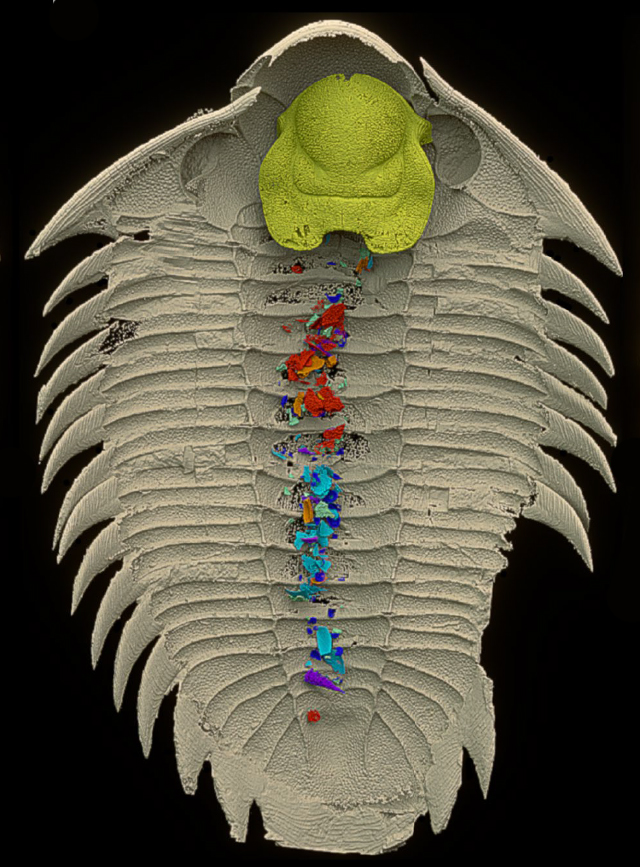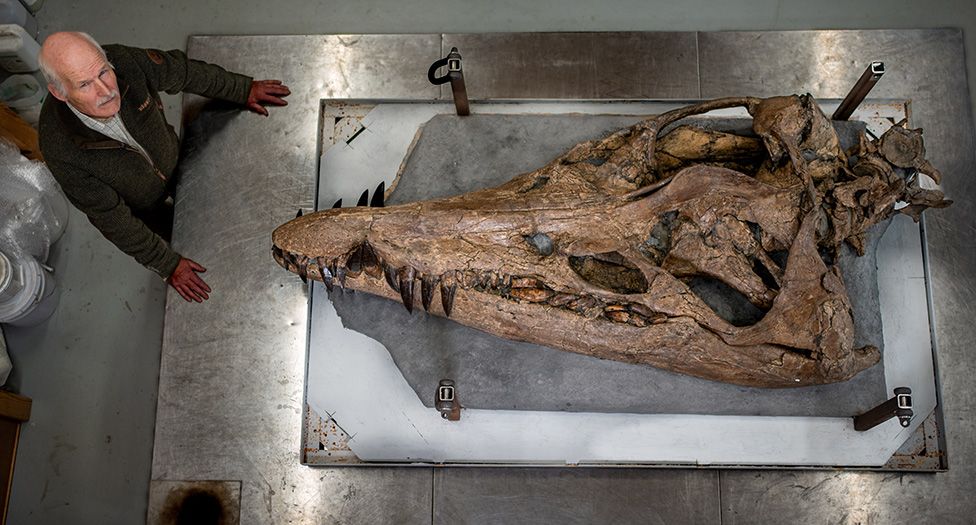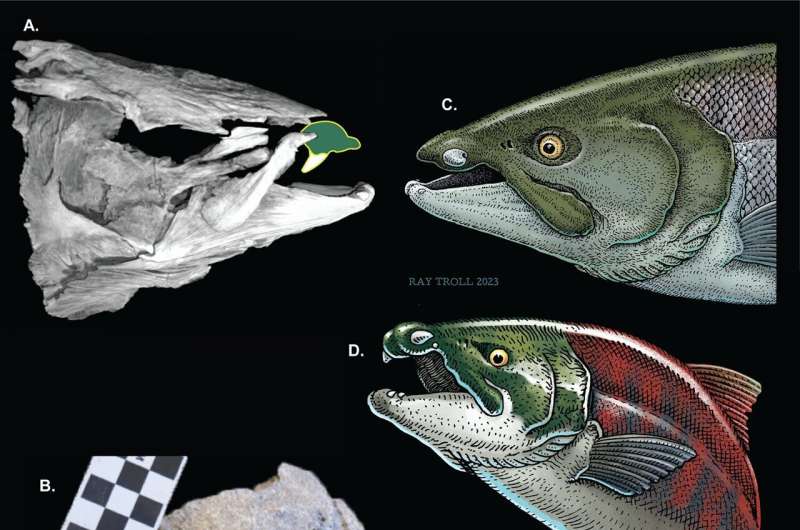ramonmercado
CyberPunk
- Joined
- Aug 19, 2003
- Messages
- 58,270
- Location
- Eblana
Ah, but then not all Farmers are the same.
Cull farmers not badgers!
Tomb Of The Unknown Farmer.
Ah, but then not all Farmers are the same.
But then. . . Farmers get grumpy if you Badger them!They're not as grumpy and ill tempered as farmers,
Not a dung beetle but found in dino dung.
Beetles are everywhere—and new members of Earth’s most diverse group of organisms are being discovered nearly every day.
Now, for the first time, scientists have found a new species in an unusual place: the fossilized poop of a dinosaur ancestor. Found whole and remarkably intact, the 230-million-year-old beetle, named Triamyxa coprolithica, is the first insect to be scientifically described from fossilized feces, also known as coprolites.
“This is very exciting research,” says Spencer Lucas, a paleontologist at the New Mexico Museum of Natural History and Science, who was not involved in the work. “This study is cutting edge and explores a whole new area of paleontology that has only been understood in the last decade.”
Coprolites are abundant in museum and research collections around the world. But until recently, Lucas says, few scientists examined these “little capsules of incredible fossil record” for their content, largely because researchers did not think small insects could successfully pass through a digestive system and end up in a recognizable form. Instead, paleontologists got most of their information about insect evolution from unlucky ones trapped in amber, or fossilized tree resin. But these fossils aren’t very old, geologically speaking: The most ancient ones date back to about 140 million years ago.
https://www.sciencemag.org/news/2021/06/ancient-beetle-first-new-species-discovered-fossilized-poop

I suppose if there was/is, a todays version of the trilobites, then this amazing 'scan' would illustrate something of the finer details of the amounts of coloured plastics within - not tiny bits of shells?What the trilobite had for dinner.
For roughly 250 million years, some 20,000-odd species of trilobite scuttled across Earth's ocean floor. Despite the huge abundance these diverse animals in our fossil records, much of their basic biology is still unclear, like what they ate.
Until now, trilobite diets have only been inferred from indirect clues, but researchers have just discovered the first trilobite specimen that still has signs of its final meals frozen in time within.
The complete Bohemolichas incola trilobite was preserved in fine 3D details within encasing siliceous pebbles called Rokycany Balls. Inside this specimen's staggering 465 million-year-old digestive system paleontologist Petr Kraft from Charles University in the Czech Republic and colleagues found tightly packed fragments of shell.

Ventral (belly) view of the trilobite mould, with mouthparts in gold and food particles in various colors (Kraft et al., Nature, 2023)
The shells did not show signs of being dissolved with their sharp edges still intact, suggesting the trilobite's digestive system isn't acidic but rather neutral or basic along its entire length, the researchers explain. This is how modern crustaceans and spiders do their digesting too – animals belonging to the two different modern groups in contention for the closest trilobite relatives.
https://www.sciencealert.com/fossil...vered-with-its-last-meal-still-visible-inside


Those teeth are very impressive - no doubt, I expect there'll be a few more surprises when the rest of it (hopefully) gets uncovered?Hiya head!

Steve Etches has the skull. Now he wants the rest of the animal's body
The skull of a colossal sea monster has been extracted from the cliffs of Dorset's Jurassic Coast.
It belongs to a pliosaur, a ferocious marine reptile that terrorised the oceans about 150 million years ago. The 2m-long fossil is one of the most complete specimens of its type ever discovered and is giving new insights into this ancient predator. The skull will be featured in a special David Attenborough programme on BBC One on New Year's Day.
"Oh wow!"
There are gasps as the sheet covering the fossil is pulled back and the skull is revealed for the first time.
It's immediately obvious that this pliosaur is huge and beautifully preserved. There isn't a specimen anywhere else to match it, believes local palaeontologist Steve Etches.
"It's one of the best fossils I've ever worked on. What makes it unique is it's complete," he tells BBC News. "The lower jaw and the upper skull are meshed together, as they would be in life. Worldwide, there's hardly any specimens ever found to that level of detail. And if they are, a lot of the bits are missing, whereas this, although it's slightly distorted - it's got every bone present."
https://www.bbc.com/news/science-environment-67650247
So where is the cranium? I can see the zygomatic arches but as for the brain box..? Is it that little thing following the mid line?Hiya head!

Steve Etches has the skull. Now he wants the rest of the animal's body
The skull of a colossal sea monster has been extracted from the cliffs of Dorset's Jurassic Coast.
It belongs to a pliosaur, a ferocious marine reptile that terrorised the oceans about 150 million years ago. The 2m-long fossil is one of the most complete specimens of its type ever discovered and is giving new insights into this ancient predator. The skull will be featured in a special David Attenborough programme on BBC One on New Year's Day.
"Oh wow!"
There are gasps as the sheet covering the fossil is pulled back and the skull is revealed for the first time.
It's immediately obvious that this pliosaur is huge and beautifully preserved. There isn't a specimen anywhere else to match it, believes local palaeontologist Steve Etches.
"It's one of the best fossils I've ever worked on. What makes it unique is it's complete," he tells BBC News. "The lower jaw and the upper skull are meshed together, as they would be in life. Worldwide, there's hardly any specimens ever found to that level of detail. And if they are, a lot of the bits are missing, whereas this, although it's slightly distorted - it's got every bone present."
https://www.bbc.com/news/science-environment-67650247
Probably all mouth and not much brain then?So where is the cranium? I can see the zygomatic arches but as for the brain box..? Is it that little thing following the mid line?
Hiya head!

Steve Etches has the skull. Now he wants the rest of the animal's body
The skull of a colossal sea monster has been extracted from the cliffs of Dorset's Jurassic Coast.
It belongs to a pliosaur, a ferocious marine reptile that terrorised the oceans about 150 million years ago. The 2m-long fossil is one of the most complete specimens of its type ever discovered and is giving new insights into this ancient predator. The skull will be featured in a special David Attenborough programme on BBC One on New Year's Day.
"Oh wow!"
There are gasps as the sheet covering the fossil is pulled back and the skull is revealed for the first time.
It's immediately obvious that this pliosaur is huge and beautifully preserved. There isn't a specimen anywhere else to match it, believes local palaeontologist Steve Etches.
"It's one of the best fossils I've ever worked on. What makes it unique is it's complete," he tells BBC News. "The lower jaw and the upper skull are meshed together, as they would be in life. Worldwide, there's hardly any specimens ever found to that level of detail. And if they are, a lot of the bits are missing, whereas this, although it's slightly distorted - it's got every bone present."
https://www.bbc.com/news/science-environment-67650247
A vertebra measuring 111mm (nearly 5 inches across?), and 62.7mm (2 inches in length) indicates a bloody big snake. I've seen pythons as long as a road is wide and as thick as a mans thigh but this fella must've been 'uge!Ancient anaconda.
A new ancient species of snake dubbed Vasuki Indicus, which lived around 47 million years ago in the state of Gujarat in India, may have been one of the largest snakes to have ever lived, suggests new research published in Scientific Reports. The new species, which reached an estimated length of between 11 and 15 meters, was part of the now extinct madtsoiidae snake family, but represented a distinct lineage that originated in India.
Debajit Datta and Sunil Bajpai describe a new specimen recovered from the Panandhro Lignite Mine, Kutch, Gujarat State, India, which dates to the Middle Eocene period, approximately 47 million years ago. The new species is named Vasuki Indicus after the mythical snake round the neck of the Hindu deity Shiva and in reference to its country of discovery, India. The authors describe 27 mostly well-preserved vertebra, some of which are articulated, which appear to be from a fully-grown animal.
The vertebrae measure between 37.5 and 62.7 millimeters in length and 62.4 and 111.4 millimeters in width, suggesting a broad, cylindrical body. Extrapolating from this, the authors estimate that V. Indicus may

